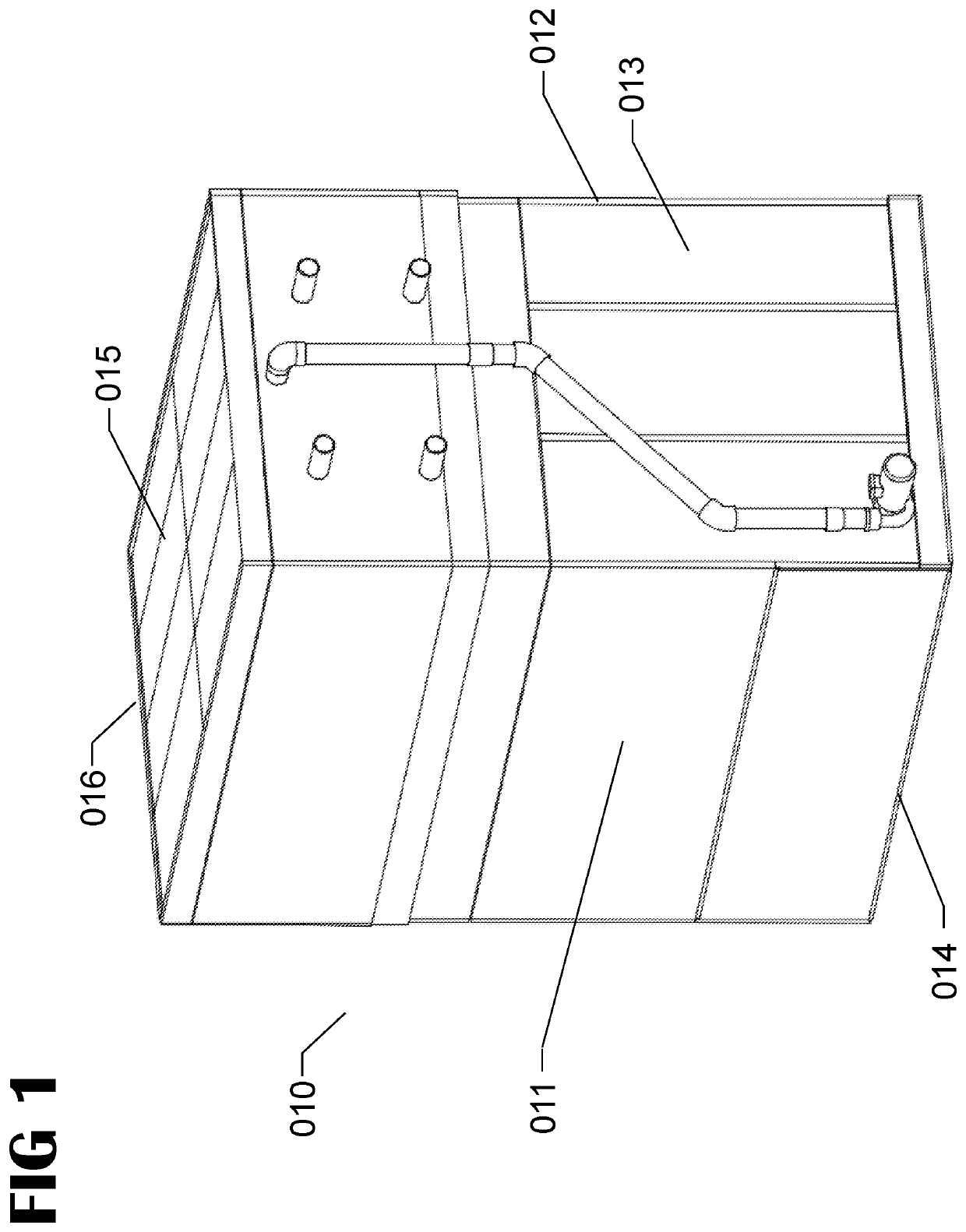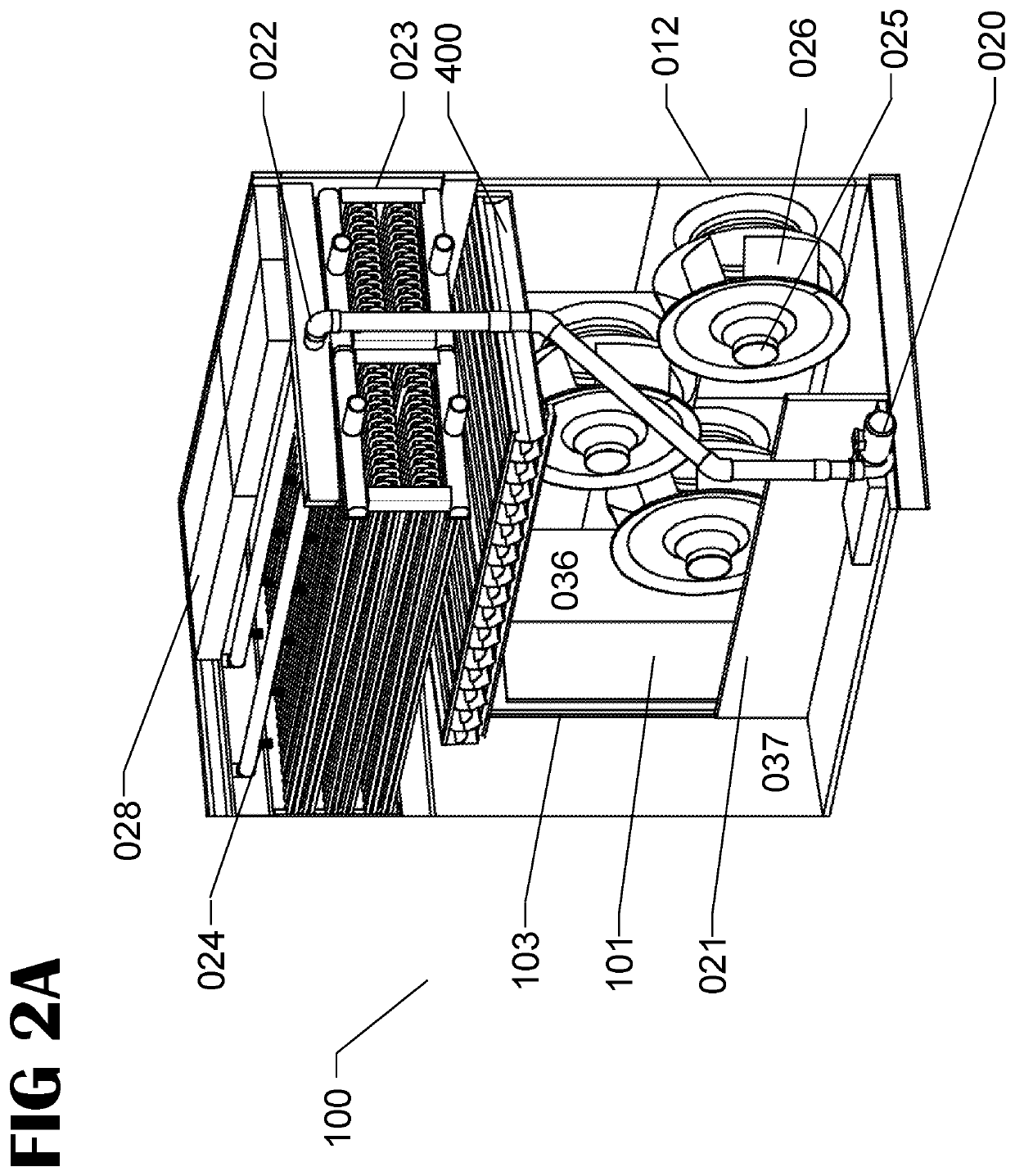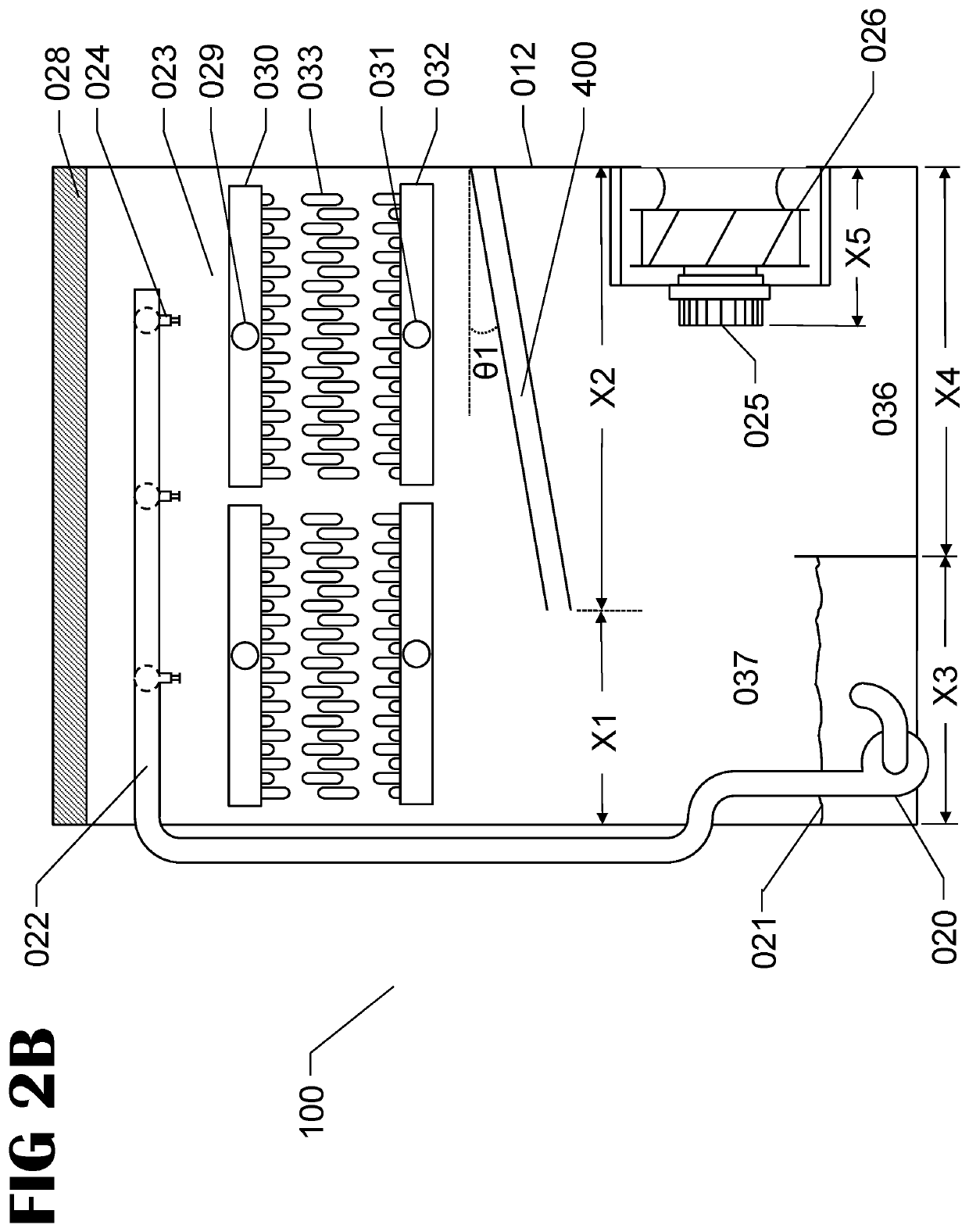Cooling tower
a cooling tower and cooling tower technology, applied in the direction of trickle coolers, stationary conduit assemblies, lighting and heating apparatus, etc., can solve the problems of increased fan energy consumption for a given airflow, poor fan performance, and higher unit cost, so as to improve air distribution and spray water flow, reduce airflow resistance, and improve air distribution
- Summary
- Abstract
- Description
- Claims
- Application Information
AI Technical Summary
Benefits of technology
Problems solved by technology
Method used
Image
Examples
eighth embodiment
[0047]the present invention is shown in FIG. 4C. The eighth embodiment 520 describes an alternative arrangement to that of the sixth or seventh embodiments in which overlapping gutter water gutter system 501 is equipped with a cleaning system 521, to prevent clogging of the gutters. For each gutter assembly, the cleaning system is composed of a nozzle 522, water supply line 523, control valve 524 and connection to a water supply 525. Cleaning water can be water from the network, spray water from the sump, make-up water, recycled or any clean available pressurized water supply. The cleaning water source is not a limitation of the embodiment. Note that gutter cleaning system 521 can be added to all disclosed embodiments. Gutter assemblies of overlapping gutter water gutter system 521 of embodiment 520 could be similar to that of previous embodiments. Angle θ1 of the overlapping gutter water collection system 501 is typically greater than 0° and less than 80°, with optimal angle betwee...
PUM
 Login to View More
Login to View More Abstract
Description
Claims
Application Information
 Login to View More
Login to View More - R&D
- Intellectual Property
- Life Sciences
- Materials
- Tech Scout
- Unparalleled Data Quality
- Higher Quality Content
- 60% Fewer Hallucinations
Browse by: Latest US Patents, China's latest patents, Technical Efficacy Thesaurus, Application Domain, Technology Topic, Popular Technical Reports.
© 2025 PatSnap. All rights reserved.Legal|Privacy policy|Modern Slavery Act Transparency Statement|Sitemap|About US| Contact US: help@patsnap.com



